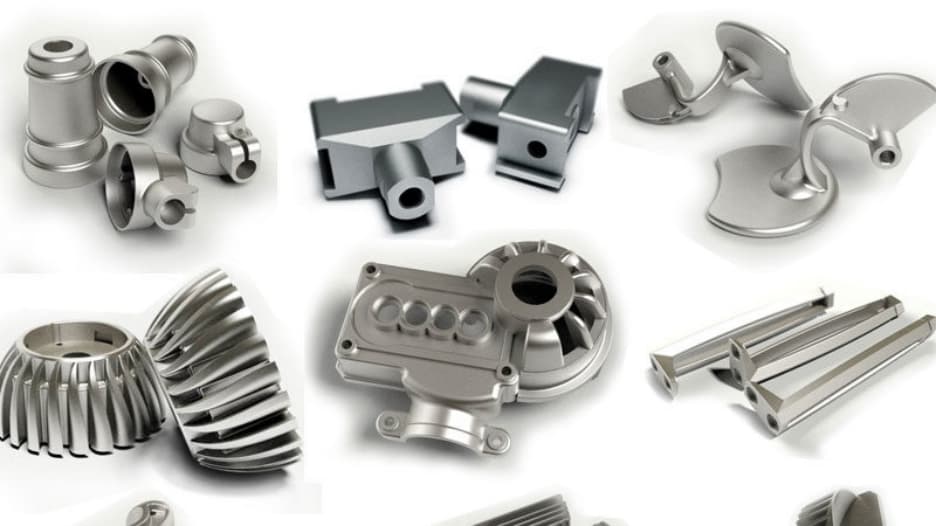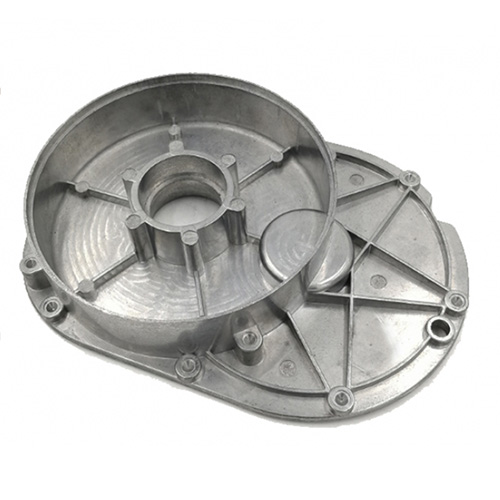Benefits of selecting Aluminum Casting over traditional materials
Understanding the Benefits and Varieties of Aluminum Castings in Sector
Aluminum castings have ended up being increasingly crucial across various industries due to their unique buildings and producing adaptability. Their light-weight and corrosion-resistant nature makes them suitable for requiring applications. Different spreading techniques enable for exact and elaborate designs. As industries progress, recognizing the variety of light weight aluminum spreading choices and their benefits is crucial. This exploration raises inquiries regarding their future role in production and sustainability. What lies ahead for aluminum in these sectors?
The Basics of Aluminum Casting Processes
Aluminum casting procedures vary in technique, they all share a common objective: to transform liquified light weight aluminum right into precise forms and components. The key approaches of light weight aluminum spreading consist of sand spreading, pass away spreading, and investment casting. In sand spreading, molds are developed utilizing sand, permitting for complex designs however frequently resulting in a rough surface coating. Die casting uses high-pressure injection of molten light weight aluminum right into metal molds, generating high precision and smooth surface areas, suitable for mass manufacturing. Financial investment spreading, or lost-wax spreading, entails creating a wax pattern coated with a ceramic shell, providing remarkable detail and dimensional precision. Each technique has its certain applications and factors to consider, consisting of cost, production quantity, and intricacy of the forms generated. Comprehending these basic techniques is essential for markets that rely upon aluminum castings to satisfy their layout and functional demands.
Trick Advantages of Using Aluminum Castings
Aluminum castings use countless advantages that make them a preferred option in numerous industries. One of the crucial advantages is their light-weight nature, which allows for much easier handling and lowered delivery costs. This characteristic adds to boosted power efficiency, especially in vehicle and aerospace applications. In addition, light weight aluminum exhibits outstanding rust resistance, expanding the life-span of components and lessening upkeep demands.
An additional advantage is the flexibility of light weight aluminum castings, which can be built right into intricate shapes, enabling innovative styles that standard products may not fit. The thermal and electric conductivity of light weight aluminum likewise makes it excellent for applications requiring heat dissipation or effective electrical links. Additionally, light weight aluminum castings are recyclable, lining up with sustainability objectives and minimizing ecological effect. In general, the mix of strength, durability, and versatility makes light weight aluminum castings an essential component in contemporary production techniques across multiple markets.
Typical Sorts Of Aluminum Castings
Aluminum castings are generated with various methods, each matched for different applications and requirements. Amongst the most common strategies are sand spreading, which provides flexibility and cost-effectiveness, and pass away casting, understood for its accuracy and effectiveness. Understanding these processes is vital for choosing the suitable casting method for particular industrial demands.
Sand Casting Refine
A significant part of aluminum castings in industry is generated with the sand casting process, which is renowned for its adaptability and cost-effectiveness. This method entails creating a mold and mildew from a sand mix, permitting the production of intricate shapes and huge components. Sand spreading is specifically beneficial for small to medium-sized production runs, as it requires marginal initial financial investment in tooling. The procedure begins with pattern making, complied with by mold and mildew preparation, pouring molten light weight aluminum, and lastly, cooling and finishing. The high thermal conductivity of aluminum warranties even cooling down, lowering the risk of flaws. Consequently, sand casting continues to be a preferred option for makers looking for efficiency and versatility in their light weight aluminum spreading applications.
Die Casting Techniques
Die casting techniques represent an extremely effective approach for creating aluminum castings, especially fit for high-volume manufacturing. These strategies primarily include two common types: hot chamber and chilly chamber die casting. In hot chamber die casting, the molten light weight aluminum is infused right into the mold from a tank that is heated up, making it excellent for low-melting-point alloys. On the other hand, chilly chamber die casting includes pouring the liquified aluminum into a different chamber before injection, which fits greater melting-point products. Both approaches use precision in shaping intricate geometries and accomplishing exceptional surface area coatings. In addition, pass away spreading is known for its quick cycle times, decreasing production expenses while maintaining uniformity in quality throughout large amounts of parts.
Applications in the Automotive Market
Transforming vehicle style and performance, aluminum castings play an essential duty in the automotive market. These castings contribute significantly to weight reduction, enhancing gas performance and total automobile characteristics. Trick applications include engine blocks, transmission housings, and suspension parts, where their light-weight nature and strength are important.
Aluminum castings likewise enable intricate geometries, making it possible for makers to create detailed styles that optimize air movement and minimize drag. This capability is specifically helpful in electric and hybrid lorries, where efficiency and effectiveness are paramount.
In addition, the rust resistance of aluminum expands the life expectancy of automobile parts, lowering upkeep expenses and boosting lorry dependability. The flexibility of aluminum castings sustains both mass production and custom applications, making them a favored selection amongst automobile designers and designers. Aluminum Casting. As the sector continues to introduce, aluminum castings will certainly remain an essential component in the quest of advanced vehicle technologies
Aerospace Industry Usage
In the aerospace industry, light weight aluminum castings are integral to the design and performance of aircraft elements. These castings are used in numerous applications, consisting of engine parts, structural elements, and interior fittings. Their lightweight nature adds to improved fuel effectiveness and total performance, which is essential in aerospace engineering.
Aluminum castings additionally supply superb strength-to-weight ratios, permitting makers to develop intricate layouts without compromising structural integrity. The capacity to produce complicated geometries makes aluminum casting a recommended selection for elements that call for accuracy and integrity.
Furthermore, light weight aluminum's resistance to deterioration boosts the durability of aerospace parts, decreasing maintenance prices and enhancing safety (Aluminum Casting). The casting procedure permits for high-volume manufacturing, satisfying the industry's needs for efficiency. Generally, aluminum castings play an essential function their website beforehand aerospace modern technology and enhancing aircraft layout, adding to the industry's recurring innovations

Advantages Over Other Materials
Aluminum castings offer considerable benefits over various other materials, making them a favored option in various sectors. One of the main benefits is their light-weight nature, which adds to reduced power intake and enhanced performance in applications such as vehicle and aerospace. Furthermore, light weight aluminum shows superb deterioration resistance, allowing for long term longevity and decreased maintenance expenses.
The material's exceptional thermal and electrical conductivity better enhances its appeal, particularly in applications needing warmth dissipation or effective power transfer. Aluminum Casting. Aluminum castings also offer outstanding dimensional stability, guaranteeing accurate resistances and lowering the possibility of problems during the manufacturing procedure
The flexibility of aluminum enables for intricate forms and intricate styles, which can be accomplished via numerous casting approaches. This adaptability makes light weight aluminum a valuable choice for suppliers aiming to innovate while keeping cost-effectiveness and top quality. To end, aluminum castings stick out because of their special mix of residential or commercial properties that accommodate diverse commercial demands.
Future Trends in Aluminum Casting Modern Technology
Future trends in light weight aluminum spreading modern technology are increasingly concentrated on automation and the growth of innovative alloys. Automation stands to improve efficiency and precision in casting procedures, minimizing labor expenses and enhancing item uniformity. Concurrently, innovations in alloy solutions promise to expand the series of applications for aluminum castings, resolving details efficiency needs in various sectors.
Automation in Casting Procedures

Advanced Alloys Development
With the continuous development of product scientific research, the development of advanced alloys is set to change light weight aluminum spreading modern technology significantly. These cutting-edge alloys are made to enhance mechanical buildings, deterioration resistance, and thermal stability, satisfying diverse industrial applications. Researchers are concentrating on hybrid alloys that incorporate aspects such as magnesium, silicon, and zinc to accomplish peak efficiency. Furthermore, improvements in computational modeling and simulation are making it possible for the forecast of alloy behavior under different problems, streamlining the layout process. The integration of recycling technologies is additionally coming to be essential, allowing manufacturers to generate high-performance light weight aluminum castings while lessening ecological impact. As these fads continue, the light weight aluminum casting industry is most likely to witness considerable renovations in effectiveness, sustainability, and product top quality.
Regularly Asked Concerns
Exactly How Is Aluminum Casting Eco-friendly?
The question of light weight aluminum casting's ecological kindness occurs from its recyclability and lower power usage compared to various other steels. In addition, advancements in sustainable practices further boost its environmentally friendly reputation within making processes.
What Is the Typical Life-span of Aluminum Castings?
The normal lifespan of aluminum castings varies based on application and atmosphere, typically varying from a number of years to years. Elements such as direct exposure to destructive components and mechanical anxiety can significantly affect their toughness and durability.
Can Aluminum Castings Be Reused?
Aluminum castings can without a doubt be recycled. This procedure greatly minimizes waste and conserves resources, permitting producers to recycle materials effectively. Reusing aluminum castings adds to sustainability and decreases the environmental effect connected with aluminum manufacturing.
What Are the Usual Problems in Aluminum Castings?
Typical issues in aluminum castings include porosity, contraction, misalignment, and surface imperfections. These problems can emerge from inadequate putting strategies, improper alloy structure, or not enough cooling, inevitably affecting the high quality and efficiency of the last product.
Exactly how Do I Pick the Right Aluminum Casting Refine?
Choosing the best light weight aluminum spreading procedure requires assessing production you can try here quantity, component intricacy, and wanted buildings. Factors such as expense, lead time, and product features additionally affect the choice, ensuring optimal outcomes right here for certain applications.